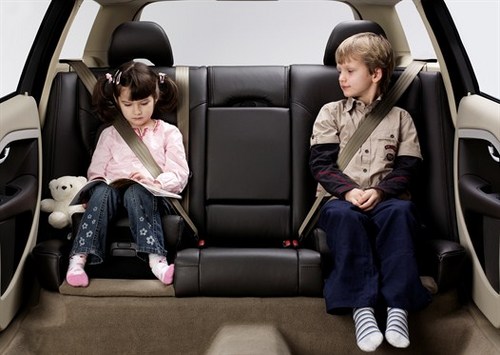14% of Parents Say They Have Left a Child Alone Inside Parked Vehicle Despite the Risks of Heatstroke
 |
WASHINGTON--April 29, 2014: Despite the dangers of leaving young children alone in hot cars, an alarming number of parents, particularly dads and those with children three years of age and under, say they have left their children alone in a parked car, according to a national online survey conducted by Public Opinion Strategies of Washington, D.C.
“One tragedy is one too many, and that’s why it’s important for parents and caregivers to understand that they serve as the first line of defense for preventing child heatstroke fatalities. We urge parents and caregivers to think”
The survey results, based on 1,000 parents and caregivers who transport children age six and under, were presented in Nashville at the National Lifesavers Conference on Highway Safety Priorities, an annual gathering of more than 2,000 traffic safety advocates and professionals.
The survey reveals that almost 7 in 10 (69%) parents said they have heard about children suffering heatstroke in vehicles but they are still willing to make exceptions when it comes to their own children. Specifically:
14 percent of parents (based on U.S. population, that number is projected to be nearly two million parents transporting more than 3.3 million children) say they intentionally have left their infants, toddlers, and kindergarten children alone in a parked vehicle. For parents of children three and under, the percentage increases to 23 percent. 11 percent of parents (more than 1.5 million parents transporting more than 2.6 million children) admit to forgetting their child in a car. For those with children three and under, it is nearly 1 in 4. Dads are almost three times more likely than moms to leave a child alone in a parked car – 23% compared to 8%.
In addition, 6% (more than 840,000 parents with nearly 1.5 million children) are comfortable letting their young children stay in a parked, locked vehicle for longer than 15 minutes.
“Many people are shocked to learn that the temperature inside of a car can rise up to 20 degrees in 10 minutes and cracking a window doesn’t help,” said Kate Carr, president and CEO of Safe Kids Worldwide. “Tragedies from heatstroke in cars happen far too often. They are heartbreaking and preventable, and this research is a reminder that we need to continue to raise awareness, particularly for dads and parents with children under three, to never leave a child alone in a car, not even for a minute.”
"Leaving a child unattended in a hot vehicle can result in swift, devastating and tragic consequences," said National Highway Traffic Safety Administration (NHTSA) Acting Administrator David Friedman. "One tragedy is one too many, and that’s why it’s important for parents and caregivers to understand that they serve as the first line of defense for preventing child heatstroke fatalities. We urge parents and caregivers to think "Where's baby? Look before you lock."
Since 1998, at least 606 children – or one child every 10 days on average– have died from heatstroke when left unattended in a vehicle or after gaining access to an unattended vehicle. Nearly 90% were children age three and under. In 2013, 44 children died, one of the worst years on record. There have been two heatstroke deaths so far this year.
Heatstroke occurs when the body isn’t able to cool itself quickly enough and the body temperature rises to dangerous levels. Young children are particularly at risk because their bodies heat up three to five times faster than an adult’s. And when a child’s temperature reaches 107 degrees, the child can die.
Role of Bystanders
The report also reveals parents who are bystanders are seeing kids left behind, but not always taking action. Nearly 4 in 10 (37%) bystanders say they have seen a young child left alone in a parked car in the last year, an important component to preventing more tragedies as many bystanders have saved lives by calling 911 when they see a child alone in a car.
“Whether you are a parent or caregiver, or just a concerned bystander, you can help save lives,” said Carr. “We know from this survey that bystanders are uncomfortable acting when they see a child left alone but they need to know that one call can save a life. Emergency personnel would much rather respond to a false alarm than a fatality.”
Tips for Parents
Safe Kids supports NHTSA’s heatstroke education campaign, “Where’s baby? Look before you lock,” and the increased national coordination on the issue. In addition, with the support of the General Motors Foundation, Safe Kids and its network of 600 coalitions and chapters across the nation are helping to educate parents and caregivers through its heatstroke awareness campaign, “Never Leave Your Child Alone In a Car.”
Parents, caregivers and bystanders are encouraged to help reduce the number of heatstroke deaths by remembering to ACT.
A: Avoid heatstroke-related injury and death by never leaving your child alone in a car, not even for a minute. And make sure to keep your car locked when you’re not in it so kids don’t get in on their own. C: Create reminders by putting something on the backseat of your car next to your child such as a briefcase, a purse or a cell phone that is needed at your final destination. This is especially important if you’re not following your normal routine. T: Take action. If you see a child alone in a car, call 911. Emergency personnel want you to call. They are trained to respond to these situations. One call could save a life.


